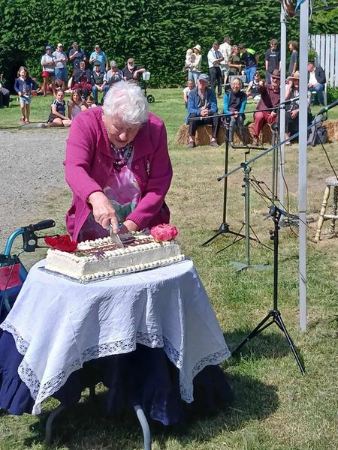
The celebration came after the Selwyn District Council decided in September to extend occupation at the settlement near Te Waihora/Lake Ellesmere by at least another 30 years.
The settlement started in 1895. The Greenslade family has owned a bach there since 1959, but can trace its connection back to 1900, when William Hopkins – Betty’s grandfather – visited by horse and trap.
The bach was bought by Betty’s mother Winfred. Betty owned the bach with her husband Doug from 1969 until 2021 when it transferred to her son David.
Selwyn Hut Owners Association member Kirrily Fea said they were planning to celebrate the huts’ milestone regardless of the outcome with the council, but the result made the day more special.
“There are some older people with some great oral stories who wouldn’t be here at the 150th.
“In the end, it was a really lovely day of closure for the community.”

“A lot of people got involved, some went op shopping, some of them hired (costumes), it was amazing really.”
Alongside the celebration, a book was created from Underground Overground archaeological consultancy’s report, which was prepared to provide evidence of the settlement’s historical significance as part of the residents’ battle with the council.
Fea said the aim is to get the book into the district’s libraries and possibly sell it more widely.

“It involved going through a lot of records, but we found them.”
Rossiter said she found out some interesting facts in her research.
“The likes of we had flushing toilets before Leeston (in the 1920s).”













